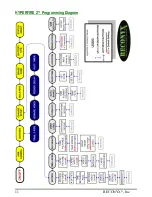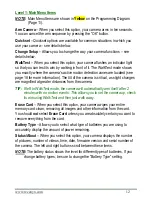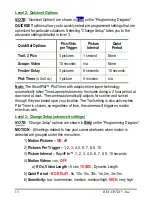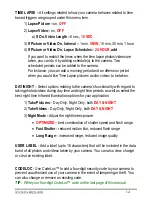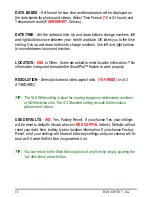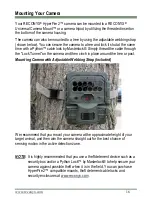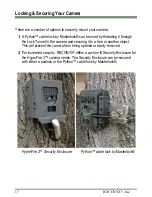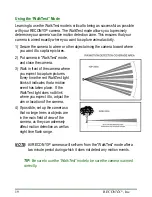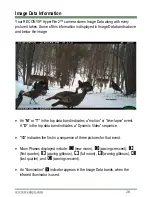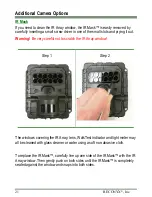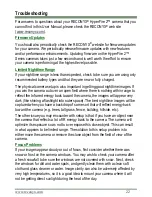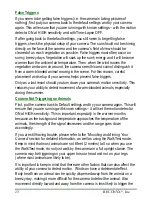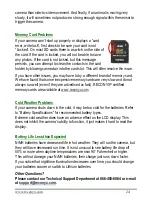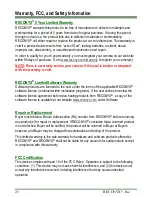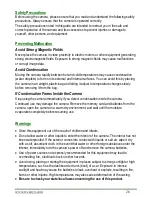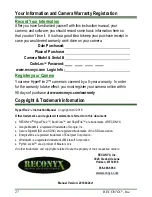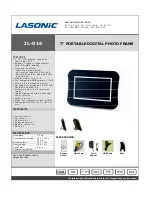
23
RECONYX
®
, Inc.
False Triggers
If you seem to be getting false triggers (i.e. the camera is taking pictures of
nothing); first put your camera back to the default settings and try your camera
again. This will ensure that you are running with known settings
–
with the motion
detector ON at HIGH sensitivity and with Time-Lapse OFF.
If after going back to the default settings, you still seem to be getting false
triggers, check the physical setup of your camera. The sun should not be shining
directly on the face of the camera and t
he camera’s
field of view should be
cleared of as much vegetation as possible. False triggers most often occur on
sunny, breezy days. Vegetation will soak up
the sun’s energy
and it will become
warmer than the ambient air temperature. Then, when the wind moves the
vegetation and warm air around, the camera sees this and cannot distinguish it
from a warm-blooded animal moving in the scene. For this reason, careful
placement and setup of your camera helps prevent false triggers.
Only as a last resort should you t
urn down your camera’s motion sensitivity
. This
reduces your ability to detect movement of warm-blooded animals, especially
during the summer.
Camera Not Triggering on Animals
First, put the camera back to Default settings and try your camera again. This will
ensure that you are running with known settings
–
it will set the motion detector
ON at HIGH sensitivity. This is important, especially in the warmer months,
because as the background temperature approaches the temperature of the
animals, the strength of the signal decreases and the range goes down
accordingly.
If you are still having trouble, please refer to the
“Mounting and Aiming Your
Camera”
section for detailed information, as well as using the WalkTest mode.
Keep in mind that most animals are not 6 feet (2 meters) tall, so when you use
the WalkTest mode, do not just walk by the camera in a full upright stance. The
camera may be triggering on your upper torso or head and not on your legs
(where most animals are likely to be).
It is important to keep in mind that there are other factors that can also affect the
ability of your camera to detect motion. Wind can have a detrimental effect.
Body heat from an animal can be quickly dispersed away from the animal on a
breezy day, making it more difficult for the camera to detect the animal. Also
movement directly toward and away from the camera is less likely to trigger the



